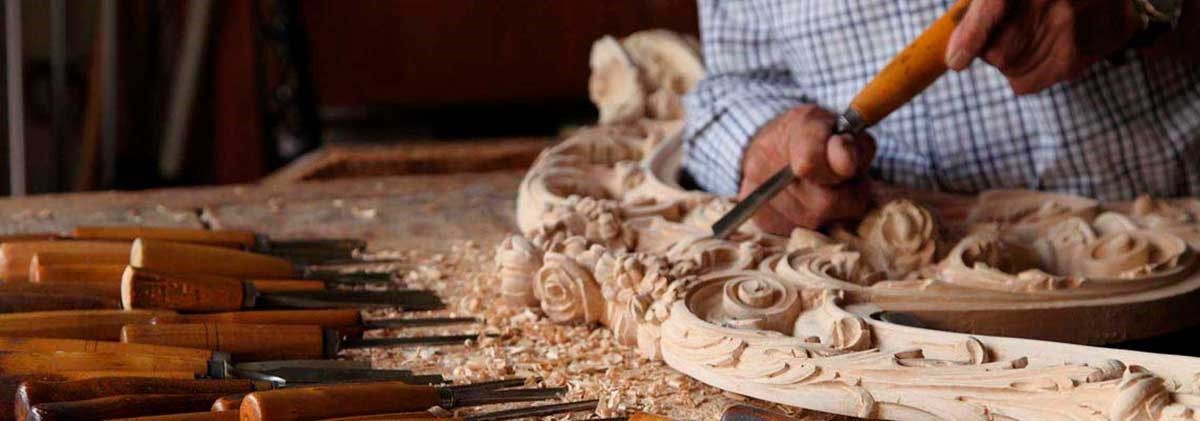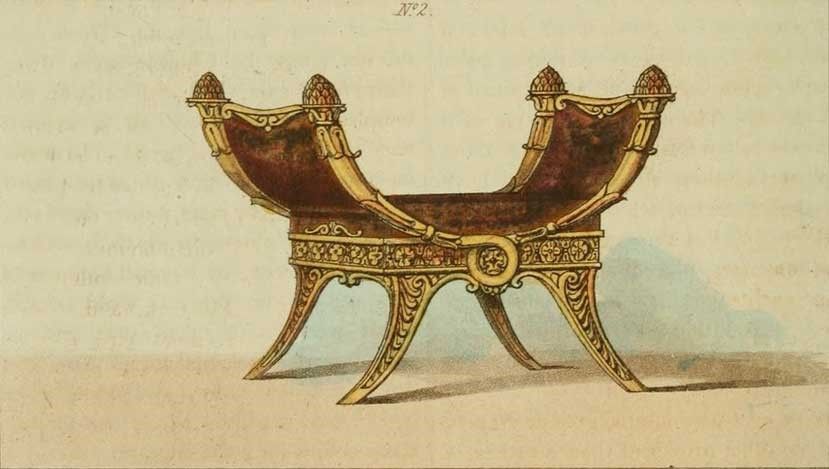
Introduction
Since furniture design has been a part of human experience since the beginning of history, it has always been taken into consideration. Italy has been prominent in furniture design for centuries, and, therefore in the design domain, Italian furniture has always been a special and general consideration. Italian style is known as one of the most common and leading design trends in the field of design. Furniture design was very popular in Italy in the 1900s and reached its peak of level and complexity. As one of the top furniture exports in the world, Italian classic furniture is very important for its country and other parts of the world. In Italy, furniture not only serves as a functional product, but also as a work of art. This is evident from the art of Italian furniture brands in its various styles, which is inspired by its art history and has been present throughout various Italian art movements from Baroque to modern. In Italian-style furniture, fabrics are intricately selected, wood is beautifully used, and metals and stones are used in abundance. As is clear from the historical evidence, there are many reasons why classical Italian furniture is a work of art. This article gives a brief overview of the history and style of this type of furniture. In the following, we look at different historical periods and the place of Italian furniture in each period. Historical evidence of early furniture in Italy is presented in the first part of the article. The historical period of Italian furniture from the 14th to the 20th centuries is given below, and then a brief description of the characteristics and material of wood in their construction and production in the cities of Venice, Florence and Milan is given, which will be interesting to know.
Historical Evidence for the Existence of Primitive Furniture in Italy
Most Italian furniture is made of Greek designs. In the first century, wooden and bronze furniture was found in the ruins of Pompeii and Herculaneum. By studying and investigating the historical evidence, paintings and carvings from the past, one can find designs of the primitive furniture in Italy having bronze and wood formats. Such furniture was decorated with precious metals and in some designs with ivory. In some cases, the Romans used folding designs, for which there is historical evidence. These schemes were mostly used in Rome by the authorities and the Romans. Round table styles with curved bases and animal shapes were popular throughout the Roman Empire and were welcomed by the Romans. This type of design was especially popular among the Romans. It should be noted that in previous studies, the images have been found that show the use of this type of table in funerals. Most tables were made of citrus or marble. The Roman Empire fell in the 4th and 5th centuries. Thereafter, furniture generally took on a different nature. Evidence of this is clearly found in manuscripts, sculptures and paintings.

Picture No. 1: Italian Furniture Style in the Past
14th & 15th Centuries
Most medieval furniture has similar features. Most of them are dark in color and heavy in weight. In the 14th century, there were advances in the production and manufacture of furniture. The characteristics of the furniture changed and they were produced very lightly. Artisans were able to make furniture that had thinner wood that was lighter in weight. Over time, furniture was designed to be portable in style as well. Movable folding furniture was one of these designs. In the 15th century, Italian furniture designs and styles changed and took on a new era. The 15th century marked the beginning of the Renaissance, which, along with other arts, revolutionized furniture design. During this period, the styles of ancient Rome and Greece re-emerged and took on a different color. The demand of the wealthy classes of society for more houses peaked, which in turn led to the provision of more furniture, as well as the design and work on different pieces of furniture and gained special popularity. It should be noted that since the 15th century, a similar Renaissance of culture has taken place in northern Europe, especially in the Netherlands, Belgium and northern France. The designs in this period were completely different from the Medieval period and were often gilded and luxurious with floral decorations. The purpose of these designs was often to demonstrate the skills of their craftsmen.

Picture No. 2: Italian Folding Furniture
16th & 17th Centuries
In this era, Italian furniture underwent other changes. Inspired and inspired by the cultures of the Middle East and the Far East, designers in this period used fantasy and mythology in their designs, and the designs become different from previous periods. The form of this type of furniture was more prominent in the Renaissance period and is more decisive in terms of design in other parts of Europe than in previous periods. The 17th century brought the evolution of the Baroque style. Baroque was a style of architecture, painting, music, and sculpture that began in Italy in the late 16th century and spread to Europe until the late 18th century, when it became popular in Central and South America. Freedom in design, large number of shapes and their fusion were the features of this style. Italian furniture was created through various artistic movements that spread in Italy. Classic style furniture was inspired by the most famous Baroque and Rococo movements. The furniture and furnishings produced during this period followed the Baroque style and had lavish engravings. Gold or silver sheets were used to decorate them. Others were gilded or decorated with oysters. The bases of the furniture and its handles were also made of marble. Decoration with marble can be seen in other furniture such as chests, tables and cupboards.
18th Century
In Italy, beginning in the 18th century, furniture became a more modern element in the imperial and neoclassical style. Baroque curves were soon replaced by geometric features, and bold colors soon returned to more neutral and simpler palettes. In the 18th century, the French demonstrated their dominance of the industry and flourished the Rococo style. Rococo is a term in the history of art to describe decorative art in various fields of architecture, architecture, painting, sculpture, furniture design and decorative objects. Furniture and furniture decorations increased, and these decorations were inspired by different Greek, Roman and Egyptian styles.
19th & 20th Centuries
At this time, France was more influential in furniture design. In the 19th century, Italy revived Gothic, Rococo, and Renaissance styles in furniture design. Designers once again began to draw inspiration from oriental and ancient arts, trying to use woodcarving, handicrafts with walnut and ivory in common styles. A new chapter in the design of this style began in the 20th century. And 20th century design using twentieth-century Italian furniture advanced the market.
Italian Furniture in Venice
In the design of Italian furniture in Venice, grotesque inlays were used. In Venice, in addition to walnut wood, willow and sycamore woods were used as a background for decorating furniture as well as their upholstery.
Italian Furniture in Florence
In Florence, the raw materials for the production and manufacture of Italian furniture were woods such as chestnut, cypress, and spruce. They also used a bit of iron, leather and metal for patterns or designs. An example of an Italian sofa made of leather is provided for acquaintance.
Italian Furniture in Milan
In Milan, brown walnut wood was often inlaid with ivory and bone, creating striking effects. Antique Italian marble coffee tables also became very popular throughout Europe and the United States in the mid to the late 1800s.
The Last Word
Centuries have passed and Italian furniture has maintained its special place in the world of design. Italian furniture has a global appeal and is one of the most popular furniture designs around the world. Italian furniture is a classic style very decorated and worked and at the same time attractive. In Italy, furniture design is a profession and skill been passed down from generation to generation for hundreds of years. While styles have changed over the centuries, the quality of work remains at the highest level in the world. Moreover, all styles of Italian furniture have received a lot of attention. In a number of cities of Italy such as Venice, Milan, and Florence, Italian furniture is produced in various designs and materials of wood which have interesting and attractive effects and are very special.
References
https://asaschin.com/
https://asaschin.com/product-category/%D9%85%D8%A8%D9%84/%D9%85%D8%A8%D9%84-%D8%B1%D8%A7%D8%AD%D8%AA%DB%8C-%D8%A7%D8%B1%D8%B2%D8%A7%D9%86/
https://study.com/academy/lesson/italian-furniture-history-styles.html

 icons at the top right corner of the subsection.
icons at the top right corner of the subsection.